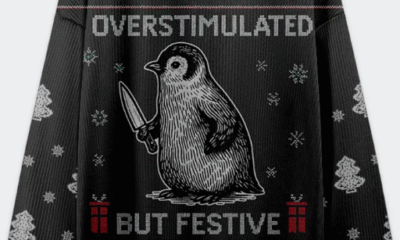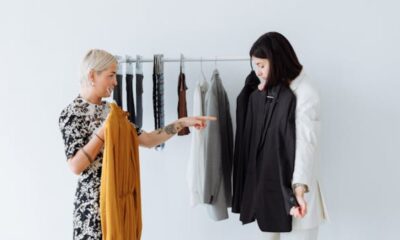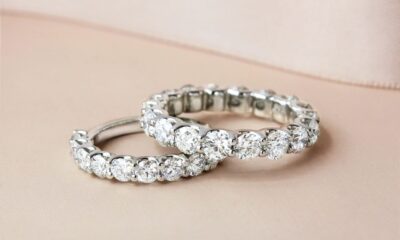FASHION
How Brown Robe Monks Inspired Modest Religious Fashion
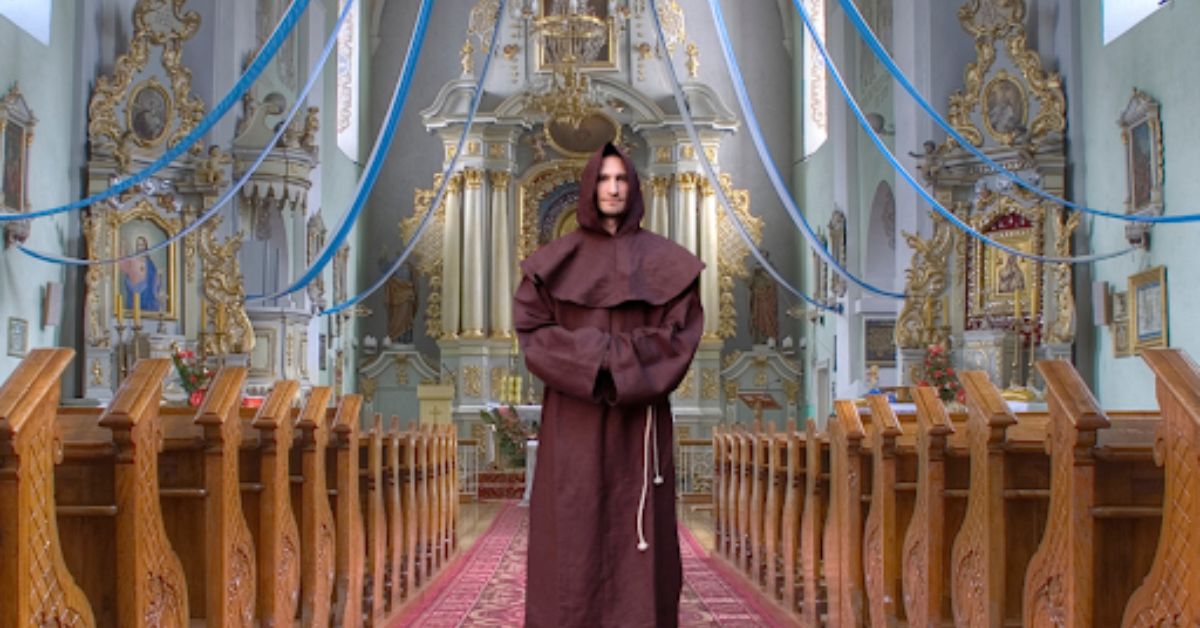
When we think of a monk in robes, we usually think of calmness, humble living, and strong spiritual focus. For many Christian communities, especially those in monasteries, the brown robe monk has become a powerful symbol of humility and devotion. But beyond the walls of monasteries, this simple style has quietly influenced what we now see as modest religious fashion, especially in clergy attire.
This article explores how the habits worn by monks, especially the brown monk robe, have inspired modern-day clothing for religious leaders and those who want to express their faith through simple, modest garments. We will also talk about the meaning behind these robes, who wears them, and how you can find a robe that stays true to the monastic tradition.
What is a Monk’s Habit?
A monk’s habit is simply not ordinary clothing. It is part of the monk’s simple and prayerful life. The words “habit dress” or “monastic habit” describe the special clothes monks and other religious people wear in Christian traditions. These clothes are usually plain, loose, and made from natural materials like wool or cotton.
A monk’s habit often has a long robe, a simple rope belt, and a hood. This outfit helps monks stay focused on God and live with humility. It’s not worn for fashion or comfort but to help with a life of prayer and service. Many saints, like Saint Francis and Saint Benedict, wore these simple robes to show they had let go of worldly things. Their clothing was plain, but their hearts were full of love and faith. The monk’s habit also helps keep the monk away from distractions and reminds him to stay close to God every day.
Why Do Monks Wear Brown Robes?
The color brown has deep meaning. It stands for the earth, humility, and simple living. That is why many monks, especially Franciscan and Benedictine monks, wear brown robes. This choice reflects the life and spirit of the brown robe monk.
The brown monk’s robe is a symbol of:
- Poverty: Letting go of worldly things
- Simplicity: Focusing on faith, not fashion
- Devotion: Living each day for God
The brown robe monk follows the path of saints who gave up everything to live a life of prayer and service. Today, the image of a brown robe monk still inspires many people to choose modest and respectful clothing that reflects faith and humility.
The Benedictine Habit and Its Influence
The Benedictine habit is one of the most well-known monk habits. It is a simple robe, often brown or black, worn by monks who follow the Rule of Saint Benedict. These monks live quiet lives focused on prayer, work, and reading.
The monk in habit from a Benedictine monastery often becomes a role model for modest religious living. The habit they wear is not just clothing; it is a promise to live a certain way.
In today’s world, many clergy members and religious people look to this kind of clothing when choosing clergy attire. The inspiration from the monks with brown robes can be seen in long tunics, loose-fitting garments, and simple designs that focus on function, not fashion.
Clergy Attire Inspired by Monks
Clergy attire has changed over the years, but the heart of it remains the same: to dress in a way that shows respect, humility, and faith. Much of this comes from the monastic tradition.
Modern clergy attire often includes:
- Long, flowing robes
- Neutral colors (brown, black, grey)
- Simple shapes
Many priests, ministers, and spiritual leaders choose to wear garments inspired by the monk in robes. The reason? They want their clothing to reflect their calling, not to draw attention to themselves, but to point toward God.
This quiet influence from the brown robe monk continues to shape how people dress in religious settings today.
Why Modest Religious Fashion is Growing
People today are tired of fast-changing fashion and busy lifestyles. Many want clothes that feel calm, meaningful, and connected to their faith. This is where the brown monk robe and traditional monk clothing inspire change.
Clergy attire has taken ideas from monk habits and made them more modern. Monks wear simple robes to stay humble and close to God. These robes are often brown, plain, and made of natural cloth like cotton or wool. Now, many priests and religious leaders are wearing clothes that follow this same idea. Their robes may be newer in style, but they still show modesty and faith.
This mix of old and new creates a strong message. Brown monk robes, once worn only in monasteries, are now inspiring how clergy dress today. People are choosing longer robes, peaceful colors, and soft fabrics that show respect, just like monks have done for centuries. These changes help bring modest religious fashion into modern life, without losing the meaning behind it.
How to Choose a Brown Monk Robe Today
If you want to buy a brown monk robe for prayer, church events, or peaceful daily wear, it’s good to choose one that reflects real monastic life. For example, the Franciscan Monk Robe in brown with a removable hood is a great choice.
- Material and Feel: This robe is made from a soft, breathable fabric that is both lightweight and durable. It’s comfortable for long hours of wear.
- Simple and Practical Design: It includes a full-length brown robe with wide sleeves, a white rope belt, and a removable hood. The loose fit and flowy design reflect traditional Franciscan styles.
- Removable Hood Feature: The attached hood can be taken off when not needed, making it easier to use in different settings.
This type of robe is not only something you wear. It’s a quiet way to live out your faith. Wearing it can remind you of Saint Francis and the humble path of monks. You can find this robe and others like it at eClergys, where many items are handmade with care and tradition in mind. These robes are designed to reflect true monastic values while offering comfort and dignity for modern clergy and faithful wearers.
Where Can You Buy Monk-Inspired Clothing?
There are many good places to find monk-style robes and clergy attire inspired by tradition:
- Online monastery gift shops
- Stores that specialize in religious and clergy clothing
- Trusted sites like eClergys.com
If you’re looking for something authentic and simple, search for terms like “brown monk robe,” “brown robe monk,” or “monastic habit.” These keywords will help you find robes that match the style worn by traditional monks.
A great example is the Benedictine Habits collection at eClergys. These robes follow the classic Benedictine design, loose-fitting, full-length, and usually in deep brown or black. Some come with hoods, wide sleeves, and rope belts, just like the garments worn in monasteries. These robes are perfect for anyone who wants to reflect faith, humility, and simple living in what they wear. Whether you are clergy or a layperson, this style helps you stay connected to spiritual tradition.
Conclusion:
The brown robe monk stands as a clear example of a life centered on faith, simplicity, and devotion. From the peaceful monasteries to today’s churches and spiritual communities, this humble robe has continued to influence how people of faith dress with purpose. It’s not just about wearing traditional clothes, it’s about carrying forward values of humility and prayer through modern clergy attire. Whether it’s the handcrafted Franciscan robe with a removable hood or the classic Benedictine habits found at eClergys, these garments remind us that true spiritual beauty lies in living simply and faithfully.
As we’ve seen in this article, monastic habits have shaped clergy attire by reminding us to value peace over pride, purpose over fashion. Whether it’s the humble Franciscan robe with its removable hood or the classic Benedictine habit, each garment carries a deep meaning. They remind us of saints who lived with less to gain more spiritually.
If you want to wear something that shows your faith, monk-style robes are a good choice. These robes are simple but meaningful. They remind us of a life filled with prayer, helping others, and staying humble. When you wear a robe like this, you are not just getting dressed, you are showing your beliefs. It’s a way to carry the peaceful and faithful spirit of monks who have worn brown robes for many years.
FASHION
How Our Fleece Hoodie Sets Inspire Confidence, Comfort, and Connection

Combining Faith and Fashion for Everyday Wear
In the modern world, clothing is more than a necessity—it is a reflection of personality, values, and lifestyle. For believers, fashion can be an extension of faith, allowing them to express spiritual devotion while embracing comfort and style. Our fleece hoodie sets were designed with this vision in mind, merging faith-inspired design with cozy, versatile wear. christian hoodie sets provide adults with a way to carry messages of hope and encouragement wherever they go, while christian kids hoodie sets allow children to participate in faith-based expression from an early age.
The collection reflects the idea that clothing can empower, uplift, and unify. Wearing a hoodie that communicates a message of faith reminds individuals of their values, boosting confidence and reinforcing a sense of purpose throughout the day. From family outings to casual gatherings, these hoodies make faith a living part of everyday life.
Comfort That Supports Daily Life
One of the most significant benefits of fleece hoodie sets is the unmatched comfort they provide. Designed with soft, high-quality fleece, these hoodies offer warmth without bulk, making them ideal for both indoor and outdoor activities. Christian hoodie sets prioritize comfort while maintaining a polished and versatile appearance, allowing adults to move freely and engage in their daily routines with ease.
Children benefit from the same thoughtful design in christian kids hoodie sets. These hoodies are crafted to be soft and flexible, accommodating active play and long school days without restricting movement. The fleece material ensures that kids remain warm and comfortable while promoting confidence through functional and stylish clothing. Comfort, in this sense, becomes more than physical—it is the foundation for feeling secure, self-assured, and ready to embrace challenges.
Inspiring Confidence Through Faith-Based Design
Confidence often stems from feeling aligned with one’s values, and our fleece hoodie sets offer a tangible way to embody faith through clothing. Each design includes Christian symbols, verses, or uplifting messages that remind wearers of their spiritual foundation. Christian hoodie sets inspire adults to step into each day with a sense of purpose and assurance, knowing that their clothing reflects their beliefs.
For children, christian kids hoodie sets help cultivate self-confidence by merging comfort with meaningful design. Young wearers learn that faith is not only practiced through prayer or church attendance but can also be expressed proudly through everyday choices. These hoodies become a gentle encouragement for kids to embrace who they are and the values their families hold dear.
Creating Meaningful Connections with Others
Our fleece hoodie sets are designed to foster connection, both within families and in broader communities. Wearing a hoodie that carries a message of faith can spark conversations, allowing wearers to share their beliefs and experiences in approachable ways. Christian hoodie sets act as conversation starters, helping adults connect with like-minded individuals or provide encouragement to those who may need it.
Christian kids hoodie sets serve a similar purpose for younger wearers. Children can take pride in sharing their faith through clothing, creating bonds with peers, family members, and church friends. By wearing these hoodies, both adults and children become part of a network of believers, strengthening relationships and encouraging shared experiences rooted in faith.
Matching Family Hoodies for Unity and Togetherness
One of the unique features of our fleece hoodie collection is the availability of coordinated designs for families. Matching christian hoodie sets and christian kids hoodie sets allow parents and children to wear outfits that visually express their shared values. This coordination is more than a style statement—it symbolizes the unity and connection within a family’s faith journey.
Families often report that wearing matching hoodies makes special events, church outings, or holiday gatherings even more memorable. Children feel included in their parents’ spiritual life, while adults appreciate the opportunity to visually reinforce family bonds and shared beliefs. These hoodies strengthen family identity and provide a tangible expression of love, faith, and togetherness.
Versatility for Any Occasion
Fleece hoodie sets are not limited to casual wear; their design makes them suitable for a wide range of occasions. Adults can pair christian hoodie sets with jeans, leggings, or casual pants, transitioning seamlessly from home to church, volunteering, or outdoor activities. The hoodies also layer well with jackets or coats, providing additional warmth during colder seasons.
Children experience similar versatility with christian kids hoodie sets. Whether attending school, participating in extracurricular activities, or enjoying family outings, these hoodies accommodate active lifestyles while maintaining a faith-driven aesthetic. The adaptability of fleece hoodies ensures that wearers are always comfortable, confident, and connected to their spiritual values regardless of where the day takes them.
Encouraging Positivity and Mindfulness
Beyond physical comfort and faith expression, fleece hoodie sets encourage mindfulness and positivity. Each design serves as a subtle reminder of hope, perseverance, and love, creating an uplifting influence on the wearer’s mindset. Christian hoodie setschristian kids hoodie sets offer adults reassurance during challenging days, helping them maintain focus on gratitude, patience, and spiritual growth.
For children, christian kids hoodie sets provide an early lesson in cultivating positivity and resilience. Faith-centered designs teach children to reflect on their values and engage with the world through a lens of hope and kindness. By wearing these hoodies, both adults and children carry a small yet consistent encouragement that reinforces confidence and spiritual well-being throughout their daily routines.
Conclusion: Comfort, Confidence, and Connection in Every Hoodie
Our fleece hoodie sets exemplify the powerful intersection of faith, comfort, and community. Christian hoodie sets provide adults with a practical and stylish way to express their beliefs while enjoying warmth and versatility. Christian kids hoodie sets do the same for children, fostering confidence and a sense of belonging at an early age.
From everyday wear to special gatherings, these hoodies offer more than clothing—they provide a tangible way to live out faith, connect with others, and feel secure in one’s values. Matching family sets strengthen bonds, while meaningful designs inspire reflection, positivity, and spiritual awareness. Through the GuidingCross fleece hoodie collection, families and individuals can experience the unique combination of comfort, confidence, and connection, making every day an opportunity to embrace faith with intention, joy, and style.
FASHION
Merry Gainsmas – The Ultimate Holiday Gym Apparel Collection
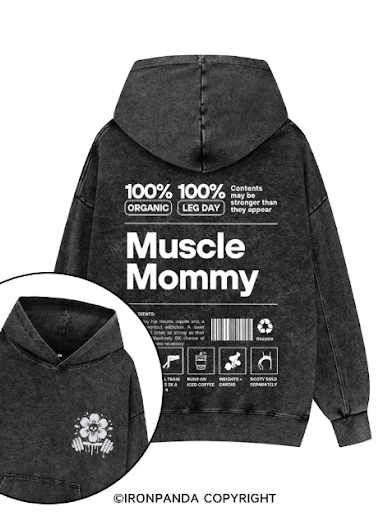
1. Introduction: Celebrate Gainsmas in Style
The holiday season is synonymous with festive cheer, indulgence, and celebration, but it can also make it challenging for fitness enthusiasts to maintain consistent workouts. With holiday feasts, chilly weather, and busy schedules, staying motivated at the gym is often a test of discipline. Iron Panda Fit’s 2025 Merry Gainsmas collection brings a unique solution to this challenge, combining festive design with high-performance workout apparel. Featuring christmas gym shirts and gym hoodies for women, this collection ensures athletes can stay stylish, comfortable, and motivated throughout the holiday season while celebrating their dedication to fitness.
2. Christmas Gym Shirts: Fun Meets Function
Christmas gym shirts are the centerpiece of the Merry Gainsmas collection. Designed with playful graphics, humorous slogans, and holiday-inspired motifs, they make workouts enjoyable and festive. From witty sayings like “Sleigh the Gym” to Santa lifting weights, these shirts add personality and cheer to any training session. Beyond the visual appeal, they are crafted with moisture-wicking, breathable fabrics that keep athletes comfortable and dry. Stretchable materials provide unrestricted movement, making them suitable for weightlifting, cardio, HIIT, or group fitness classes. Christmas gym shirts offer a perfect combination of functionality and festive spirit, helping athletes stay motivated during the busiest season of the year.
3. Gym Hoodies for Women: Cozy, Versatile, and Stylish
For women, gym hoodies are an essential part of winter workout gear. Iron Panda Fit’s gym hoodies for women are designed to offer warmth, comfort, and functionality. Soft fleece linings, adjustable hoods, and convenient pockets make them perfect for pre-workout warm-ups, outdoor exercises, or post-workout recovery. Subtle festive designs, such as snowflakes, candy cane patterns, or holiday-inspired quotes, add seasonal charm without overwhelming the look. Layered over a Christmas gym shirt, these hoodies create a complete, functional, and stylish workout outfit. Beyond the gym, they are versatile enough for casual wear, allowing women to stay cozy and festive while remaining active.
4. High-Performance Fabrics for Maximum Comfort
While playful designs capture attention, the fabrics and construction of Merry Gainsmas apparel ensure athletes can perform at their best. Christmas gym shirts and gym hoodies for women are made from durable, breathable materials that support a variety of workouts. Moisture-wicking technology keeps sweat away from the skin, stretchable fabrics provide full mobility, and flatlock stitching minimizes irritation. Reinforced seams ensure long-lasting durability, even with frequent use. This combination of comfort, performance, and style allows athletes to focus on their training while enjoying festive and eye-catching designs.
5. Motivation Through Holiday Apparel
Festive workout clothing can provide a psychological boost, helping athletes stay motivated during the busy holiday season. Wearing Christmas gym shirts and gym hoodies for women adds fun, energy, and positivity to training sessions. Bright colors, witty slogans, and playful graphics create an engaging and uplifting environment in the gym. Women benefit from the warmth and comfort of hoodies, making early morning or outdoor workouts more inviting. Holiday-themed apparel turns workouts into an enjoyable experience, keeping athletes consistent and focused while celebrating the season.
6. Perfect Holiday Gifts for Fitness Enthusiasts
The Merry Gainsmas collection also makes thoughtful and practical gifts for friends, family, and workout partners. Limited-edition designs add uniqueness and festive charm, making each piece a memorable gift. Men can enjoy humorous or bold Christmas gym shirts, while women can appreciate versatile, cozy, and stylish gym hoodies. Gifting holiday workout apparel encourages loved ones to stay active, supports their fitness goals, and spreads holiday cheer. Fitness enthusiasts will love the combination of fun, functionality, and festive spirit, making these items ideal for anyone passionate about staying fit during the holidays.
7. Styling Your Holiday Workout Wardrobe
Creating a cohesive and festive workout look is easy with Merry Gainsmas apparel. Pair Christmas gym shirts with leggings, joggers, or shorts to highlight the playful designs while ensuring comfort and flexibility. Women can layer gym hoodies for women over fitted tanks or long-sleeve tops for added warmth and style. Accessories like holiday-themed socks, headbands, or sneakers complete the look and add a cheerful touch. These outfits are versatile enough to be worn during gym sessions, outdoor workouts, or casual holiday events. Proper styling allows athletes to feel festive, comfortable, and confident while enjoying their workouts.
8. Sustainability in Holiday Fitness Apparel
Sustainability has become increasingly important in fitness apparel, and Iron Panda Fit’s 2025 Merry Gainsmas collection reflects this trend. Many Christmas gym shirts and gym hoodies for women are crafted from recycled or responsibly sourced materials, reducing environmental impact while maintaining comfort and quality. Ethical manufacturing practices ensure minimal waste, and eco-friendly packaging promotes responsible consumption. By choosing sustainable holiday workout apparel, athletes can enjoy stylish and functional clothing while making environmentally conscious decisions. This combination of sustainability, performance, and festive design ensures that each piece is both practical and responsible.
9. Conclusion: Celebrate Gainsmas with Style and Motivation
Iron Panda Fit’s Merry Gainsmas 2025 collection allows athletes to celebrate the holiday season while staying active, motivated, and stylish. Christmas gym shirts and gym hoodies for women provide the perfect balance of comfort, performance, and festive cheer. High-quality fabrics, thoughtful designs, and sustainable practices make these garments durable, functional, and visually appealing. Whether shopping for yourself or gifting to friends and family, festive workout apparel encourages consistent training, motivation, and celebration during the holidays. This season, stay fit, festive, and inspired with the ultimate holiday gym apparel collection from Iron Panda Fit, turning every workout into a joyful and motivating experience.
FASHION
Holiday Style Wars: Ugly Christmas Sweater or Japanese Hoodie?
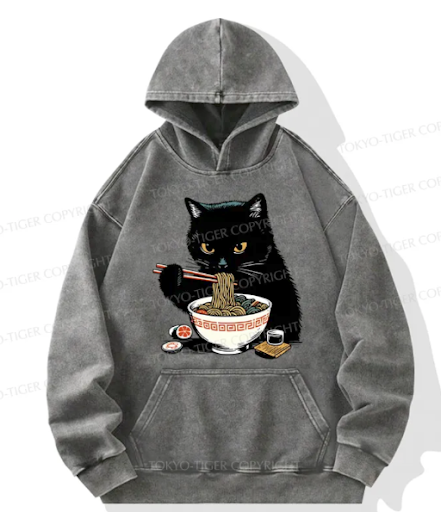
Fashion has always been a battlefield of ideas, cultures, and creativity. While some clothing trends are seasonal and tied to festive celebrations, others are rooted in global streetwear movements that dominate year-round. In today’s fashion scene, two very different yet equally popular styles are constantly making waves: the ugly Christmas sweater and the Japanese hoodie. At first glance, they couldn’t be more different. One is humorous, festive, and over-the-top, while the other is stylish, modern, and deeply tied to cultural identity. But when it comes to choosing between them, the question arises: which one wins the holiday style wars? This article explores the story, appeal, and impact of both trends, comparing the playful charm of the ugly Christmas sweater with the sleek coolness of the Japanese hoodie.
The Quirky Rise of the Ugly Christmas Sweater
The ugly Christmas sweater has become a global fashion staple during the holiday season. Once seen as tacky or outdated, these sweaters have been transformed into a symbol of festive fun and nostalgia. Originally, knitted sweaters decorated with reindeer, snowflakes, and holiday motifs were popular in the mid-20th century as cheerful winter wear. But by the late 1980s and 1990s, their loud colors and kitschy designs made them the butt of jokes. Instead of disappearing, however, the “ugly” label gave birth to an ironic fashion trend.
Today, ugly Christmas sweaters are worn proudly at office parties, family gatherings, and even dedicated events like Ugly Sweater Day. The wilder the design, the better—sweaters with jingling bells, flashing lights, or 3D decorations are highly prized. Their popularity reflects the human desire for laughter, togetherness, and seasonal traditions. By intentionally wearing something “ugly,” people connect with others in a way that feels lighthearted and joyful.
The Cool Evolution of the Japanese Hoodie
In contrast, the Japanese hoodie represents the cutting edge of streetwear culture. While hoodies in general are a global wardrobe essential, Japanese hoodies stand out because of their bold designs, cultural influences, and high-quality craftsmanship. They often feature anime characters, kanji lettering, symbolic art such as koi fish or dragons, and creative prints that merge modern style with traditional Japanese motifs.
The Japanese hoodie is versatile and can be worn year-round, making it a go-to for casual fashion lovers and anime fans alike. It has also gained international recognition thanks to social media, music artists, and influencers who showcase Japanese fashion as part of the global streetwear movement. Unlike the ugly Christmas sweater, which is temporary and seasonal, the Japanese hoodie has a timeless quality that adapts to different settings and personalities.
Ugly Christmas Sweater: The Fun Holiday Winner
When it comes to holiday gatherings, the ugly Christmas sweater dominates. It’s not about looking stylish but about creating laughter, joy, and shared memories. These sweaters transform an ordinary party into a playful event, with competitions for “ugliest sweater” often being the highlight. They also allow people to express creativity—whether through DIY designs or unique store-bought options.
The sweater’s popularity also reflects the commercialisation of holiday culture. Brands release limited-edition designs every December, often inspired by movies, TV shows, or internet memes. This keeps the trend fresh and exciting, ensuring that ugly Christmas sweaters remain a seasonal must-have.
Japanese Hoodie: The Everyday Style Icon
While the ugly Christmas sweater rules December, the Japanese hoodie wins in everyday life. It’s not tied to one season or event, making it a permanent fashion staple. Its artistic designs resonate with younger generations who value individuality and cultural expression. Fans of anime and manga also use these hoodies to proudly display their passions, turning clothing into a personal statement.
The Japanese hoodie has also become a part of global street culture, blending seamlessly with sneakers, denim, and other streetwear staples. It embodies comfort, versatility, and creativity, making it a go-to choice for people who want to stand out without compromising on style.
Comparing the Two Fashion Giants
In the battle of ugly Christmas sweater vs Japanese hoodie, each has its strengths and weaknesses.
- Seasonal Appeal: Ugly Christmas sweaters shine during December but rarely work outside the holiday season. Japanese hoodies, on the other hand, can be worn all year round.
- Cultural Meaning: The ugly sweater represents tradition, humour, and family gatherings. The Japanese hoodie reflects modern identity, creativity, and the global influence of Japanese pop culture.
- Versatility: Ugly sweaters are limited in when and how they can be worn, while Japanese hoodies are versatile and adaptable to different styles and occasions.
- Fashion Purpose: Ugly sweaters are about fun and irony, while Japanese hoodies are about style and self-expression.
Ultimately, neither is better—they simply serve different purposes in fashion.
Why Both Trends Are Booming
Despite their differences, both the ugly Christmas sweater and the Japanese hoodie are booming because they satisfy the same human need: expression. Clothing is more than just fabric; it’s a language people use to connect with others. Ugly sweaters let people laugh together and celebrate tradition, while Japanese hoodies allow wearers to express individuality and align with global streetwear culture.
Their growth also reflects how fashion is shaped by community. Ugly sweaters thrive at parties and social gatherings, while Japanese hoodies thrive in online communities, fandoms, and streetwear movements. Both trends show how clothing can build belonging and identity in unique ways.
The Future of Ugly Christmas Sweaters and Japanese Hoodies
Looking ahead, both styles will continue to thrive but in different ways. Ugly Christmas sweaters will always dominate holiday culture, with designs evolving to include sustainable fabrics and eco-friendly production methods. They will remain a seasonal tradition that brings joy every December.
Japanese hoodies, meanwhile, are set to grow even more influential as anime, Japanese art, and streetwear continue to shape global fashion. Collaborations between Japanese designers and international brands will ensure these hoodies remain at the forefront of street style worldwide.
Conclusion
The fashion world often asks us to choose between styles, but when it comes to the ugly Christmas sweater and the Japanese hoodie, the real answer is that both deserve a place in modern wardrobes. The ugly Christmas sweater wins the holidays with laughter and tradition, while the Japanese hoodie dominates everyday fashion with style and cultural influence. Together, they represent how diverse fashion has become: seasonal yet timeless, funny yet stylish, local yet global.
In the end, the holiday style wars aren’t about picking one over the other. They’re about celebrating both—the festive fun of the ugly Christmas sweater and the cool artistry of the Japanese hoodie—because fashion today is about freedom, individuality, and enjoying every side of culture.
-

 TECHNOLOGY2 years ago
TECHNOLOGY2 years agoElevating Game Day Eats: A Guide to Crafting Crowd-Pleasing Sliders
-

 ENTERTAINMENT2 years ago
ENTERTAINMENT2 years agowave_of_happy_: Your Ultimate Guide
-

 FASHION2 years ago
FASHION2 years agoGPMsign Fashion: Redefining Style with Purpose
-

 TECHNOLOGY1 year ago
TECHNOLOGY1 year agoTrader Joe’s Dayforce: Revolutionizing Workforce Management
-

 FOOD2 years ago
FOOD2 years agoAltador Cup Food Court Background: A Culinary Extravaganza Unveiled
-

 HOME IMPROVEMENT1 year ago
HOME IMPROVEMENT1 year agoWhat Kitchen Renovation Companies Offer Beyond Basic Remodeling
-

 SPORTS2 years ago
SPORTS2 years agoScore Chaser Sporting Clays: A Thrilling Pursuit of Precision
-

 NEWS2 years ago
NEWS2 years agoNyl2 Kemono: Unveiling the World

